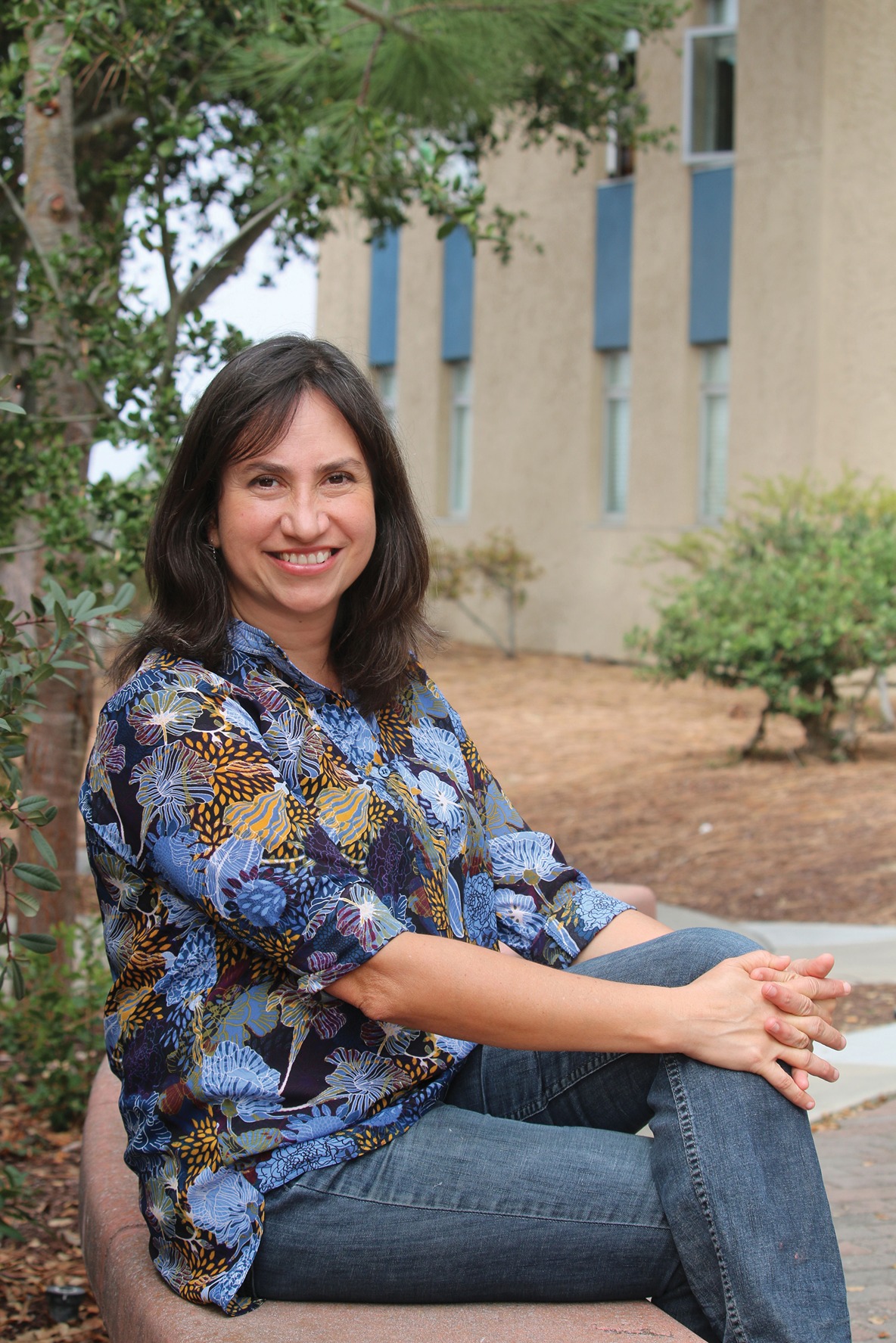CSUMB Magazine
One Click at a Time
Teaching digitally connected youth
By Estella Porras

Estella Porras
This is what I see every day walking into my classroom: Rows of students with their necks bended over glowing screens while their fingers type, tap, scroll and swipe sending uncountable bytes of LOLs, emoji, photos, and status updates to the world.
Teaching in the midst of omnipresent digital devices and the unprecedented exchange of information represents a huge challenge for educators. Many of us wonder how to respond to the digital experience of the so-called millennials. How do we engage digitally distracted students? How does the curriculum meaningfully integrate the reality of online lives?
Last fall semester I asked my HCOM 307 class to monitor one week of their media consumption. In average students said they spent 37 hours a week with digital media (including social media, mobile and all computer use). In their reflection, most of them were surprised by the amount of time spent in front of screens, and some said that they wanted to scale back. In general, most of them didn’t express much concern about privacy issues.
It’s not news that most millennials are permanently connected. In a 2015 study by the American Press Institute, “51 percent of millennials say they are mostly or almost always online or connected while 39 percent say their lives are a mix of online and offline.” However, being “almost always” connected does not necessarily mean that youth are educated about the use of the internet and digital media.
The assumption that young people are automatically savvy in terms of digital media is problematic. Professor Eszter Hargittai, an internet researcher from Northwestern University, urges us to unpack the myth of “digital natives,” the assumption that growing up with the internet means that youth inherently understand its inner working. That’s not the case, she says, as they need to learn things such online privacy, how to manage an online persona, and I would add, how to ethically respond to trolling and abusive mediated communication.
Scholars have coined the term “digital media literacy,” suggesting that beyond learning to use digital tools to chat, play and consume, youth should also learn to become critical and selective users of technology, to engage as responsible citizens,to share, collaborate, and create content in a safe and respectful manner.
In her book “It’s complicated: The Digital Lives of Teenagers,” author Danah Boyd describes how teens form their identities, gain information and reflect about politics and future in their social networks. The emergence of hashtag movements like#BlackLivesMatter or #YesAllWomen highlights the fact that today’s civic engagement of youth happens online, and that educators need to support a digitally empowered generation to make sense of this reality.
However, this networked experience is not the same for everyone. Social and economic status plays a role in the way people engage with digital media. For instance, low-income, rural, and Spanish speakers in Californian lag behind other groups in terms of online access and digital skills. Disparities have narrowed in the last years but still persist, according to a 2014 paper titled “California’s Digital Divide”by the Public Policy Institute of California. This data is consistent with a report on Teens and Technology published this year by the Pew Research Center. One finding from the report is that Black and Latino youth use mobile phones more often than other groups, but at the same time are less likely than other groups to have a connected computer at home,which ultimately limits richer engagement.
Census data shows that the digital media landscape reflects inequality and privilege and, as Boyd writes in her blog, online experiences are diverse: “Teens use of social media is significantly shaped by race and class, geography, and cultural background.”
Besides demystifying the digital native trope, and recognizing digital disparities, another piece of reflection for educators —and perhaps the most important one, is about the quality of human communication that happens in mediated environments. Is it possible, despite the frenzy of sound bites, blips, and clicks, that youth be attentive, empathetic, and able to listen to others deeply?
Educating today’s youth requires us to not only look at the opportunities of the digital tools at hand but also to the quality of the communication that they enable. We need to examine our own fears, habits, obsessions, privileges and assumptions regarding youth and technology. Then, patiently, we can encourage our students to deeply and meaningfully listen to others and engage, slow down to preserve sanity, and connect to the sea of data one click at a time.